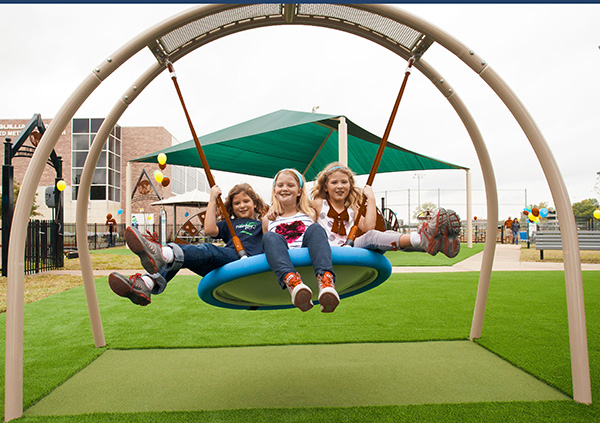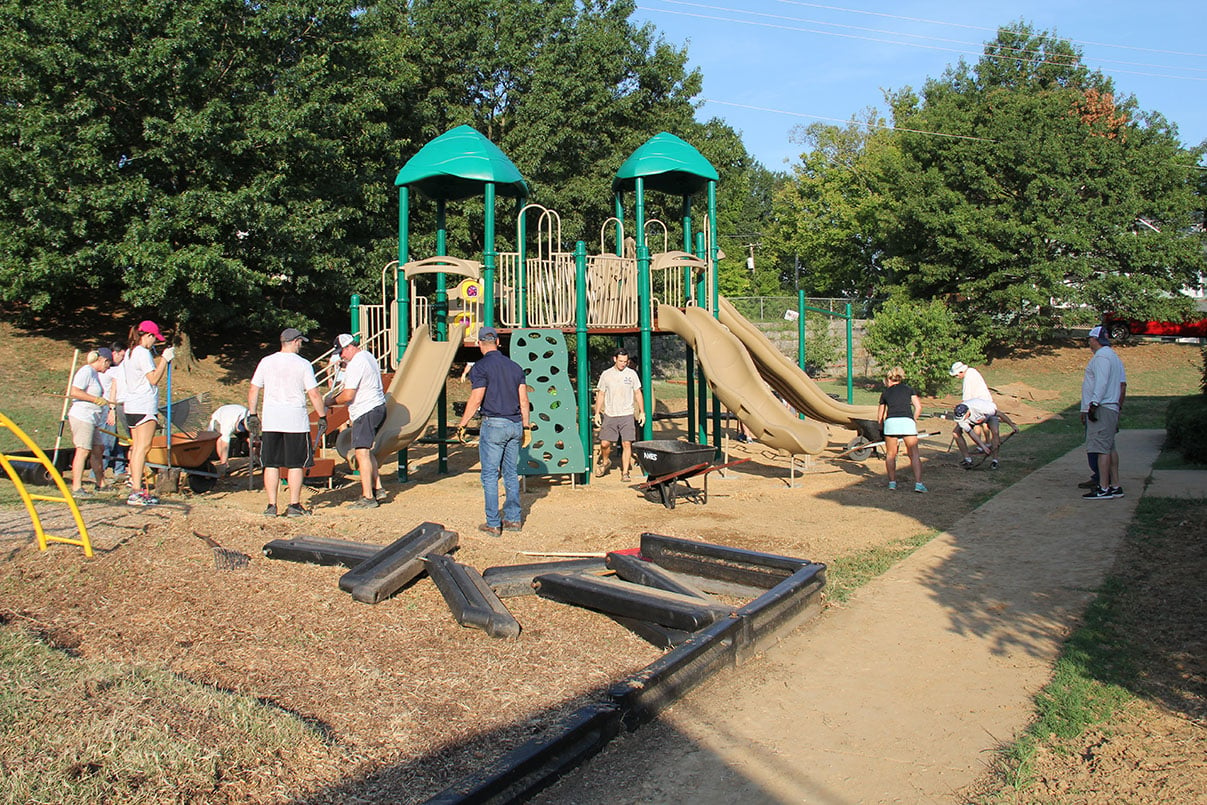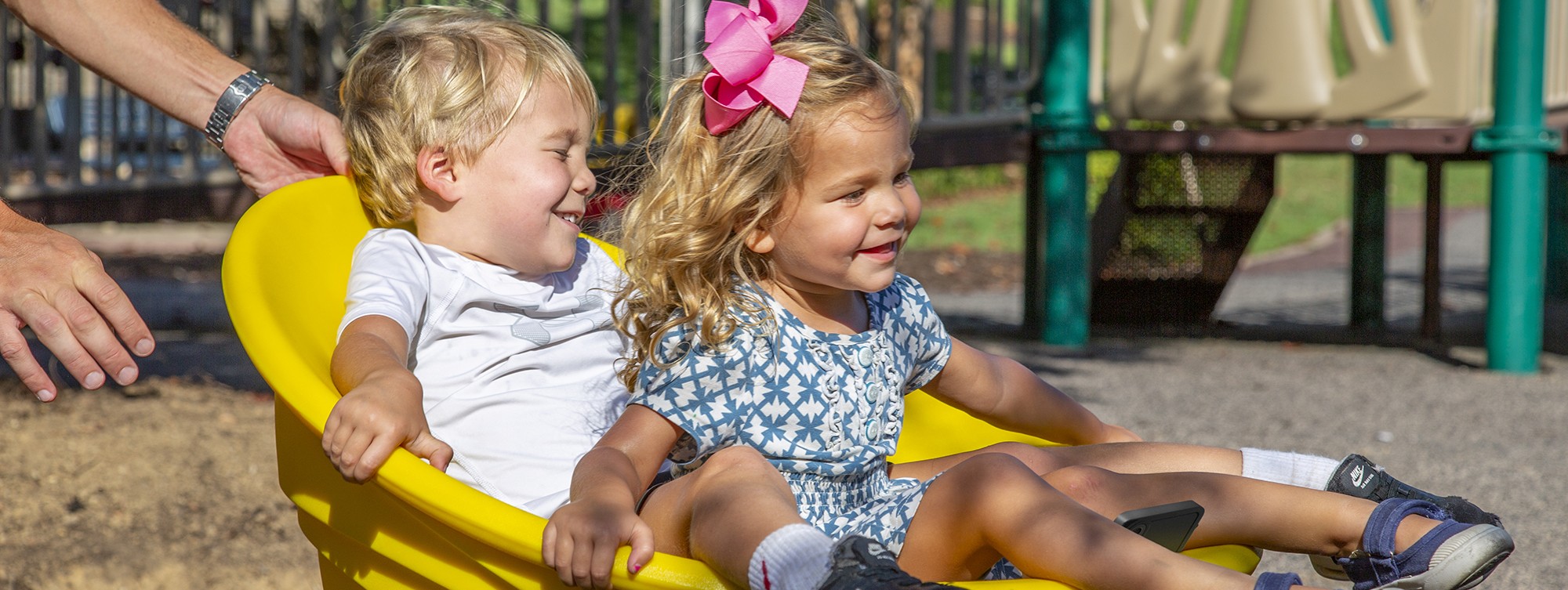Types of Play for Children
As children grow from the first few months of life through ages four and five, they develop to understand 6 types of play. You can watch your child as they progress through each stage and slowly learn how to play by themselves and then interact with other children and adults. It’s a beautiful scene watching your child grow and develop through their early years.
At Playandpark.com, we’ve designed and developed our playgrounds to allow children to grow and develop as they play. By playing on our playgrounds, children learn how to interact, socialize, and communicate with each other at a young age. These social skills they learn as children go a long way with helping them grow into successful adults. We wanted to take the opportunity to highlight the 6 stages of play for children and link to our playgrounds that help them grow through those stages. The 6 types of play for children are listed below.
- Unoccupied Play
- Solitary Play
- Onlooker Play
- Parallel Play
- Associative Play
- Cooperative Play
Unoccupied Play
This is the first, and sometimes the most important type of play for your child’s development. It is also known as “infant play” and your child goes through it from zero to two years old. Unoccupied play is when your child is just by themselves, moving their arms, legs, hands, and feet around creatively, getting to understand how it feels to move. Your child could also be practicing unoccupied play when you hand them a rattle or a stuffed animal and let them touch it and move it around.
To your child, everything is new and full of wonder. Unoccupied play is an important step that will set her up for future (and more active) playtime. Their toes are so exciting to play with and their stuffed lion is so colorful and soft! Allowing them to explore how everything feels and looks is opening their minds to the depth of the world!
Click to view playgrounds that allow your child to practice unoccupied play

Solitary Play
Solitary play normally occurs when the child is two or three years old. This type of play is when they are able to entertain themselves completely by themselves. This style of play may be represented by playing with sticks outside or reading a book by themselves. Learning how to entertain themselves individually is an amazing step in their self-understanding and will give you some much needed alone time. Learning how to entertain themselves individually will go a long way during their life in their process of self-acknowledgment.
Playgrounds that allow your child to practice Solitary play.
Onlooker Play
Sometimes during the solitary play stage or right after it, when your child is two and a half to three and a half, they enter the onlooker type of play stage. During this stage, you might notice your child stopping and staring at other kids on the playground. They also may stare at adults to watch and understand what they’re doing. This is completely normal and very much encouraged. Before a child can truly be social, they must watch to understand how a game is played. This type of play might not be played directly, but is a step towards playing well and interacting well with others.
Playground equipment that encourages Onlooker type of play.
Parallel Play
The Parallel type of play normally occurs when your child is two and a half through three and a half. This type of play exemplifies itself when your child is playing next to, but not necessarily with another child. During parallel play, they will inevitably learn how to take turns, pay attention to others and mimic behavior. It is smart to encourage your children to play with toys and on playground equipment that is easily sharable or you risk the common, “mine, not theirs” tantrum that all parents despise!
Playground equipment that encourages Parallel type of play.

Associative Play
Associative play is when your child is now playing with other children, but doing their own individual actions. The children in this stage aren’t organized to work towards a common goal. For example, it could be when your child and other children are playing with legos together, but building different lego sculptures. This is a great opportunity for your child to learn teamwork and communication and normally occurs when they are between the ages of 3 and 4.
Playgrounds that encourage associative play.
Cooperative Play
The cooperative type of play is the final stage of play your child learns as they grow older. During this stage, they learn to play with others for a common purpose. Your child normally enters this stage around four or five and are able to then do well in a classroom. After they learn cooperative play, they’re also able to apply the skills they’ve learned like socializing, communicating, problem-solving and interacting with other parts of their life!

